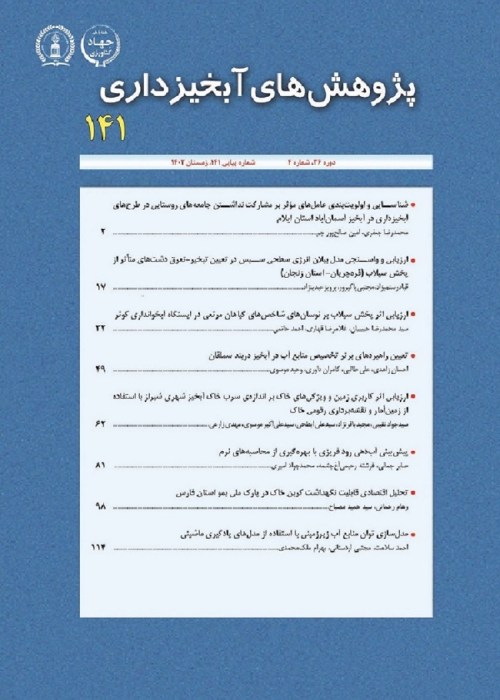Evaluation and Calibration of SEBS Surface Energy Balance Model in Determining Evapotranspiration of Plains Affected by Flood Spreading (Qaracherian-Zanjan Province)
Evapotranspiration govern the water and energy balance of the soil, primarily used in general circulation models and hydrological modeling of weather conditions. Consequently, predicting river flow, forecasting crop performance, water management systems, and the quality of rivers or lakes all depend on evapotranspiration levels. Therefore, accurate estimation of water bilan is essential. Improved and precise estimations of evapotranspiration enable effective irrigation planning and optimal water usage for other agricultural purposes. The goal of this research is to evaluate and validate the surface energy balance model, SEBS, in determining evaporation-transpiration in the Sohrin-Qareh Chiran Plain, located 30 kilometers northwest of Zanjan city.
In this study, the actual evapotranspiration were determined using the SEBS energy balance model and Landsat imagery in the Sohrin-Qareh Chiran Plain. A total of 17 Landsat-8 images, along with weather data from the Zanjan airport station, were examined. Additionally, with the help of the SEBS model, the evapotranspiration of a five-hectare wheat field was calculated and validated for the time period from September 22, 2020, to September 22, 2021. The required inputs for the SEBS model, including albedo, land surface temperature, emissivity, NDVI, vegetation cover index, leaf area index, vegetation height, and canopy density, were prepared in the ENVI software environment. The data on precipitation and water consumption volume were also determined using the soil water balance model.
The study found that the evapotranspiration estimated by the soil water balance model was 24115 m3, while the evapotranspiration estimated by the SEBS model was 28750 m3, with a 16.12% error. Additionally, the SEBS model was calibrated using four indices - R2, RMSE, MAE, and MBE - with values of 0.844, 1.06, 1.12, and 0.25, respectively. These results indicate that the SEBS algorithm is accurate enough to estimate ETa in the study area.
Conclusion and Suggestions:
Therefore, based on the results of this research, it can be said that the use of satellite images in estimating actual evapotranspiration (ET) is reliable compared to field measurement methods. Considering the limitations of traditional moisture balance methods (such as being point-specific, time-consuming, costly, requiring precise instruments, and almost impractical with the use of lysimeters) and the advantages of utilizing satellite images (covering a wide area of farms or orchards, being cost-effective and fast), acceptable results can be achieved in estimating evapotranspiration while accepting a low margin of error.
- حق عضویت دریافتی صرف حمایت از نشریات عضو و نگهداری، تکمیل و توسعه مگیران میشود.
- پرداخت حق اشتراک و دانلود مقالات اجازه بازنشر آن در سایر رسانههای چاپی و دیجیتال را به کاربر نمیدهد.




